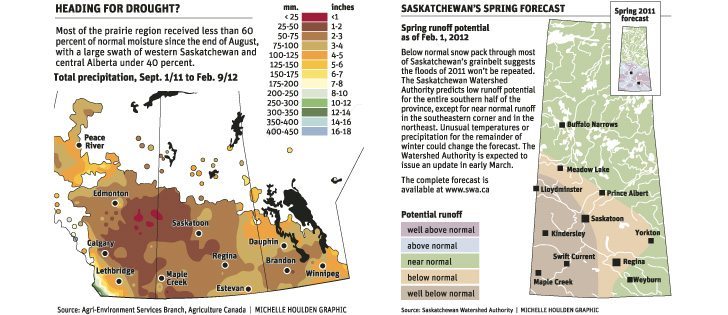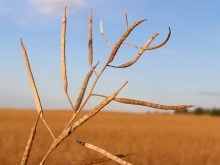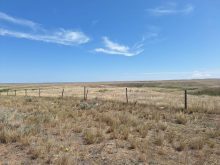Worse than 2002 conditions | Forecasters’ opinions differ on extent of dryness this year
A grain industry analyst has compared this year’s drought maps to ones from the worst drought in recent memory and has come to an alarming conclusion.
“We’re actually in worse shape today than we were in 2002,” said Larry Weber of Saskatoon.
In its final production estimate of 2002, Statistics Canada described the conditions for some growers in Alberta and Saskatchewan as worse than the Dirty Thirties.
Farmers in the central and northern regions of those two provinces began that growing season with cold temperatures and depleted soil moisture reserves. By harvest they had received no significant rain and their crops were wilting from above normal temperatures.
Read Also

India slaps 30 per cent import duty on yellow peas
India has imposed a 30 per cent duty on yellow pea imports with a bill of lading date on or after Nov. 1, 2025.
Production of the six major crops grown in Western Canada was down 25 percent from 2001, 41 percent from 2000 and 44 percent from 1999 levels.
Weber worries that the prolonged pattern of dryness since August has growers heading down the same disastrous path.
“We’ve never lost a crop in February, but it’s getting a little concerning,” he said.
“Either this weather pattern starts changing or guys are going to start to think about changing what they plan on seeding. It will become an insurance game.”
Drew Lerner, president of World Weather Inc., shares Weber’s concern about the dryness, but with the exception of a couple of pockets he thinks the situation will remedy itself over the spring and summer.
“Given all the data that I’ve looked at, I don’t think we’re going to see a full-blown drought and I certainly don’t see one like 2002. I don’t think that’s likely at all,” he said.
A lot will depend on whether the La Nina weather pattern sticks around. The probability of drought goes up if it lasts through spring and summer.
Lerner believes it will have dissipated by then, replaced by an 18-year weather cycle that will result in a colder-than-normal summer with plenty of moisture for farmers in most of Saskatchewan and southeastern Alberta.
Northwestern Saskatchewan and northeastern Alberta could remain dry, as well as southeastern Saskatchewan and southern Manitoba if a ridge of high pressure that is supposed to develop in the United States over the summer extends across the border.
Precipitation since Sept. 1 has been well below normal for the entire prairie region. Many areas have received about half their normal precipitation and is less than 40 percent of normal for a large portion of west-central Saskatchewan and central Alberta.
“We have dried out considerably,” said Bruce Burnett, director of weather and market analysis with the Canadian Wheat Board.
“I am concerned about what kind of (moisture) supplies we’re going to have for planting.”
The conditions are especially worrisome given producers’ stated seeding intentions.
“We are going to try to plant a lot of canola this year and under dry conditions, sometimes establishment is a challenge,” he said.
Burnett agreed with Weber that there are similarities to 2002, with large pockets of the northern Prairies looking extremely dry.
The Canola Council of Canada is also issuing warnings about the dryness, advising growers to adjust yields and fertilizer rates in their budgets if the conditions persist.
Dan Orchard, an agronomist with the council, said a good rule of thumb for canola is four bushels of production for every inch of moisture the crop receives from the soil and rain.
So if a grower has one inch of soil moisture this year compared to four inches last year, that is already a 12 bu. per acre reduction in yield.
His advice to growers is to use average or slightly below average yields in their budgets rather than relying on last year’s results, which were well above average for many Alberta farmers.
















